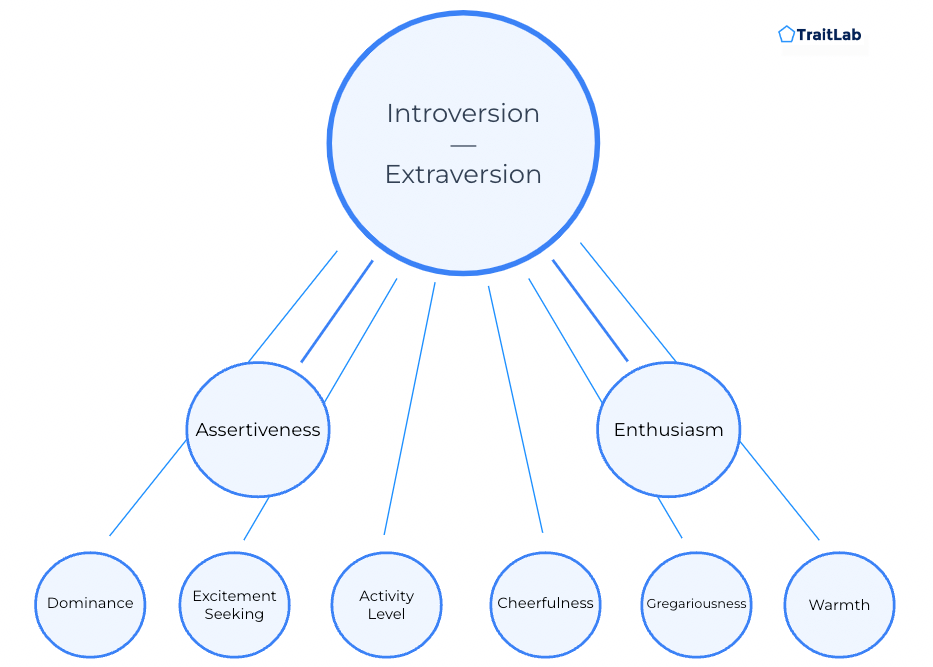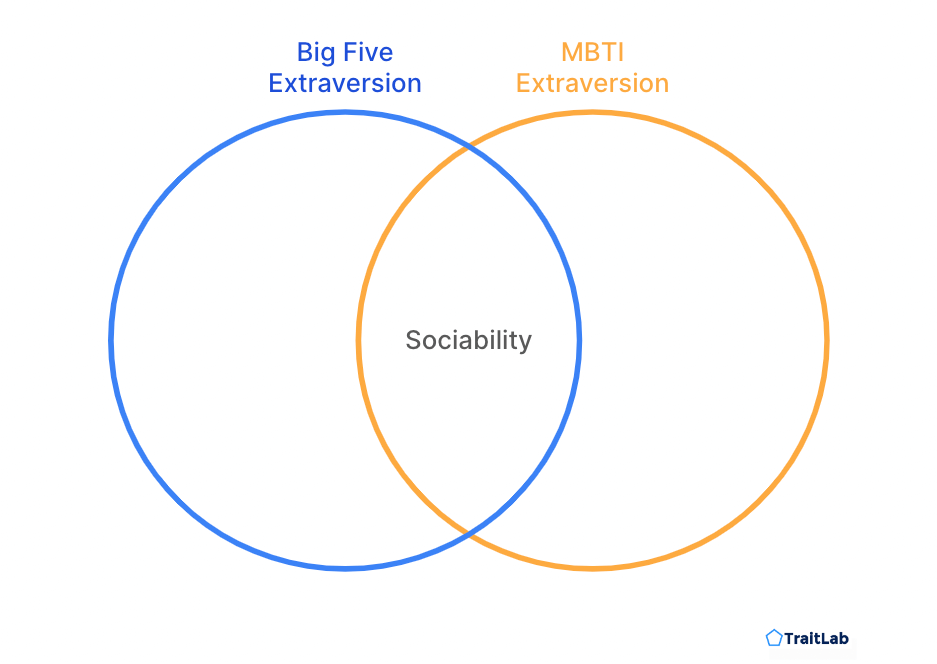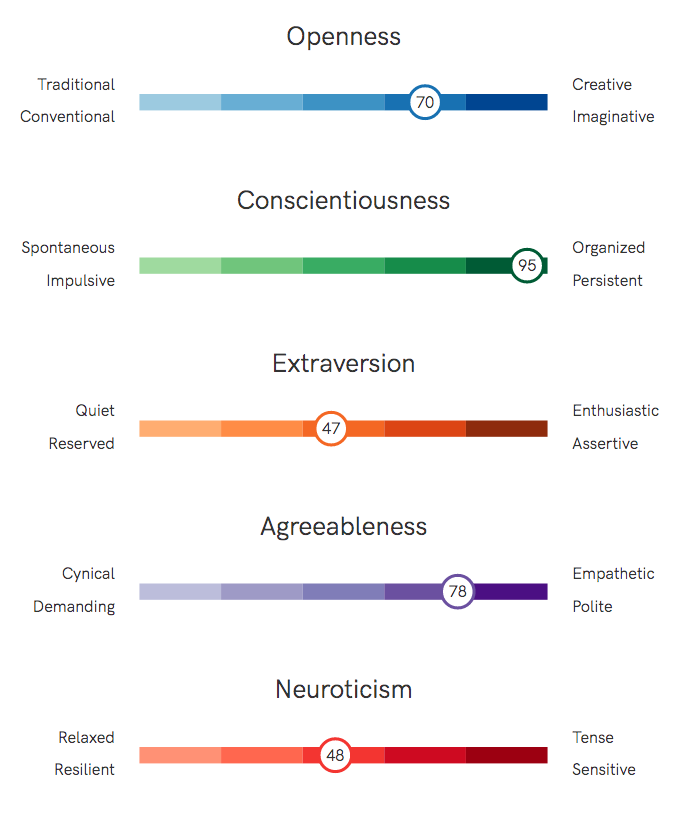The jingle fallacy (or jingle effect) occurs when two different psychological constructs or measures share the same name.
Reading time: 5 minutes

Gregory Park, Ph.D.
Author
The jingle fallacy (or jingle effect) occurs when two different psychological constructs or measures share the same name.1
The shared name often makes people assume incorrectly that different measures are measuring the same thing simply because they sound similar.
For example, consider Extraversion, which appears in the Big Five personality dimensions and “16 Personality” typologies (e.g., Myers-Briggs Type Indicator).
The Big Five and MBTI-like frameworks each include something called “Extraversion,” but Big Five Extraversion is a different construct than the Extraversion measured in MBTI-like typologies.
Here, the jingle fallacy leads people to assume that their level of Extraversion from a Big Five measure should match their Extraversion orientation from an MBTI-like measurement. Unfortunately, while both Extraversion measurements may agree in some cases, they often do not.
So, what are the differences between Big Five Extraversion and MBTI Extraversion?
Big Five Extraversion is a broad personality dimension containing many narrower, more specific personality traits related to positive emotions, sociability, and reward sensitivity.2 Big Five Extraversion describes a wide spectrum, with some people at the low and high extremes and most people somewhere in the middle.

Extraversion from the MBTI and other 16 Personality-like typologies describes a distinct attitude towards the world where “attention seems to flow out, or be drawn out, to the objects and people of the environment.”3 In MBTI-like typologies, people tend to be either Extraverted or Introverted, rather than spread out across a broad spectrum of Extraversion.
Across different MBTI or 16 Personality measures, the exact definition of Extraversion varies. However, most definitions from these sources strongly emphasize sociability as the core of Extraversion.
In a study comparing the Big Five and MBTI, 900 participants completed measures of Big Five Extraversion and MBTI Extraversion.4 Researchers then compared participants’ scores on MBTI Extraversion with the specific facets of Big Five Extraversion.
MBTI Extraversion correlated positively with all facets of Big Five Extraversion. However, correlations were much stronger among social components (e.g., Gregariousness and Warmth) than non-social components (e.g., Excitement Seeking and Activity Level).

The key to avoiding the jingle fallacy is to ignore names and labels when comparing two psychological constructs or measurements.
Instead, compare two measurements by their correlations with other variables or by the kind of predictions they can make.
If two measurements have the same pattern of correlations with other variables, and if they allow you to make very similar predictions, then you can be pretty confident that they measure the same thing, regardless of their names.

How extraverted are you?
Try a brief Big Five personality measure and see your relative Extraversion.
1 Thorndike, E. L. (1904). An introduction to the theory of mental and social measurements. Teacher’s College, Columbia University.
2 Lucas, R. E., Diener, E., Grob, A., Suh, E. M., & Shao, L. (2000). Cross-cultural evidence for the fundamental features of extraversion. Journal of personality and social psychology, 79(3), 452-468.
3 Myers, I. B., McCaulley, M. H., & Most, R. (1985). Manual: A guide to the development and use of the Myers-Briggs Type Indicator. Consulting Psychologists Press.
4 Furnham, A., Moutafi, J., & Crump, J. (2003). The relationship between the revised NEO-personality inventory and the Myers-Briggs type indicator. Social Behavior and Personality: an international journal, 31(6), 577-584.